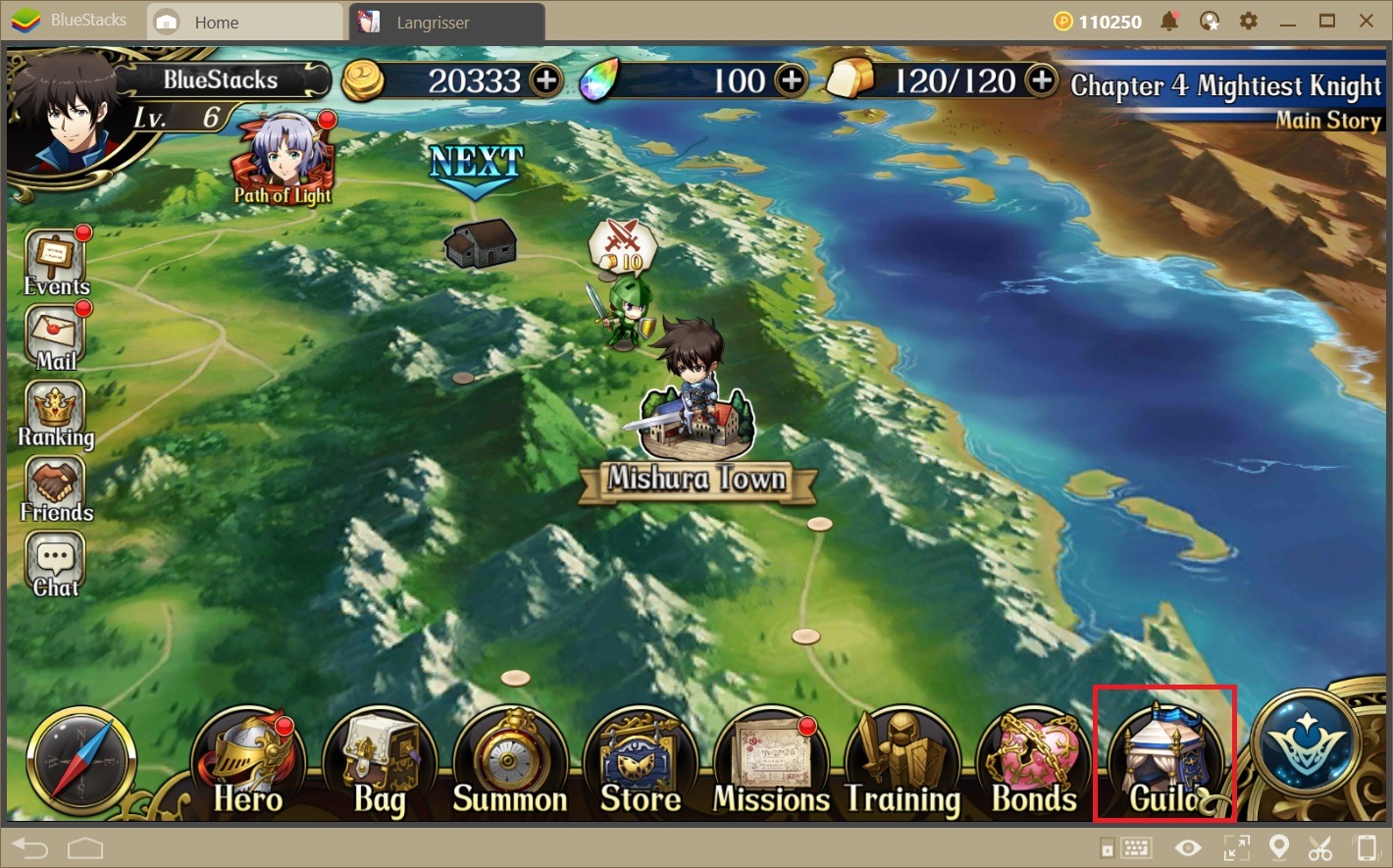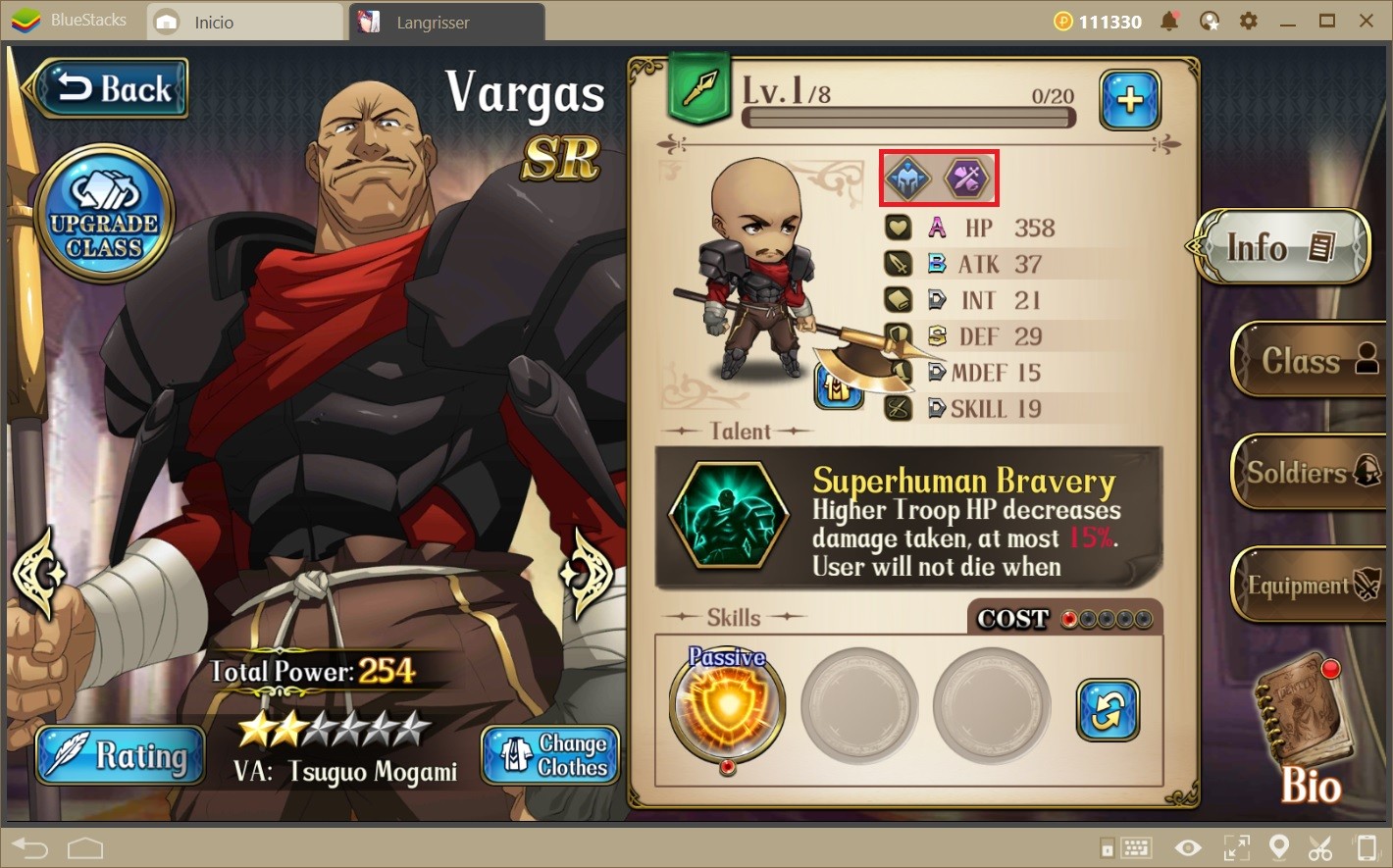Combat Fundamentals of Langrisser: Learn all about the Priority and Terrain systems
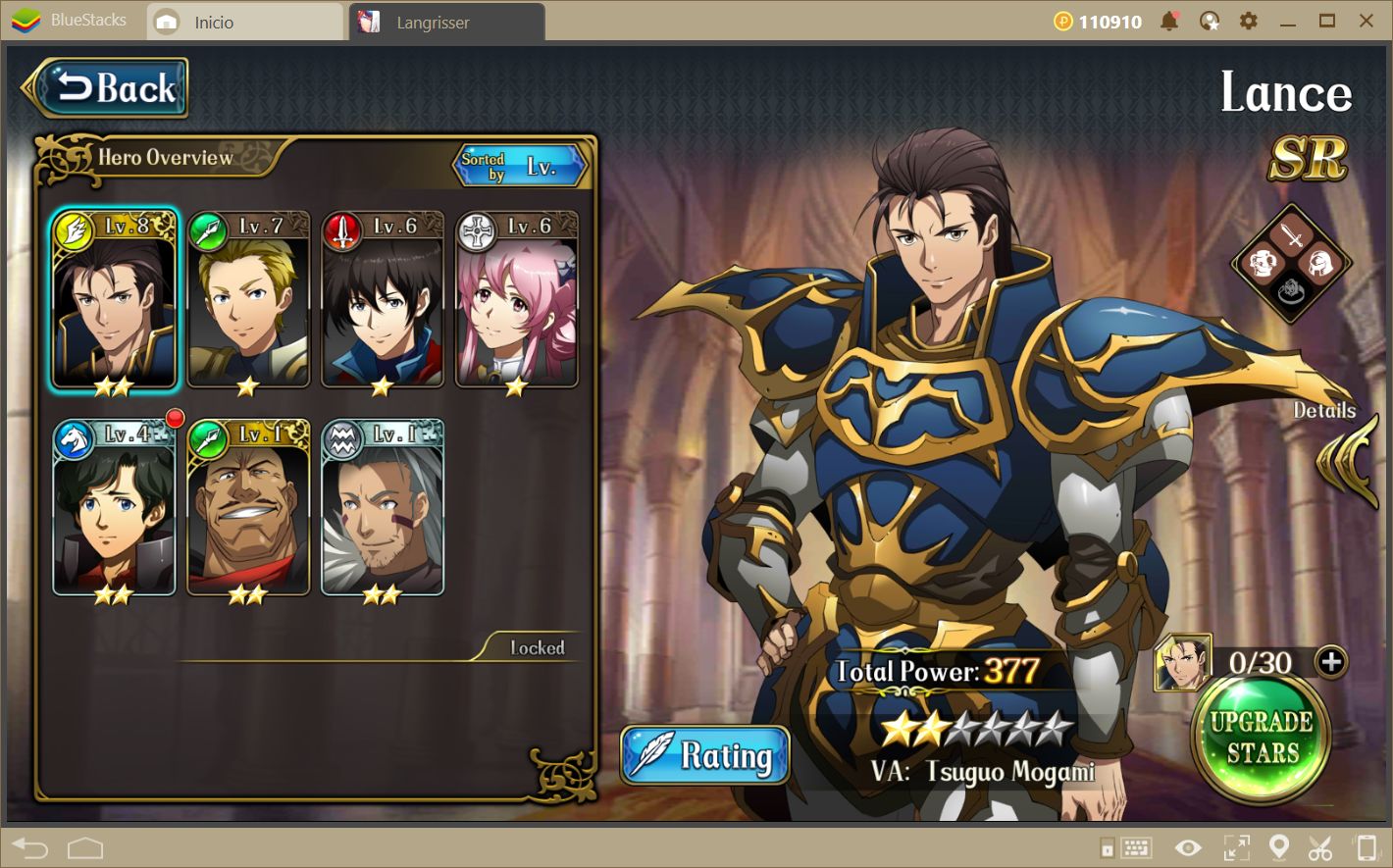
Some say that, in the art of war, you must keep your friends close, and your enemies closer. What this means is that, to triumph in battle, you must get to know your enemies very well, study their weaknesses, and understand the areas in which they are most vulnerable in order to exploit them and achieve a crushing victory. Not very surprisingly, such combat advice also applies to strategy games like Langrisser.
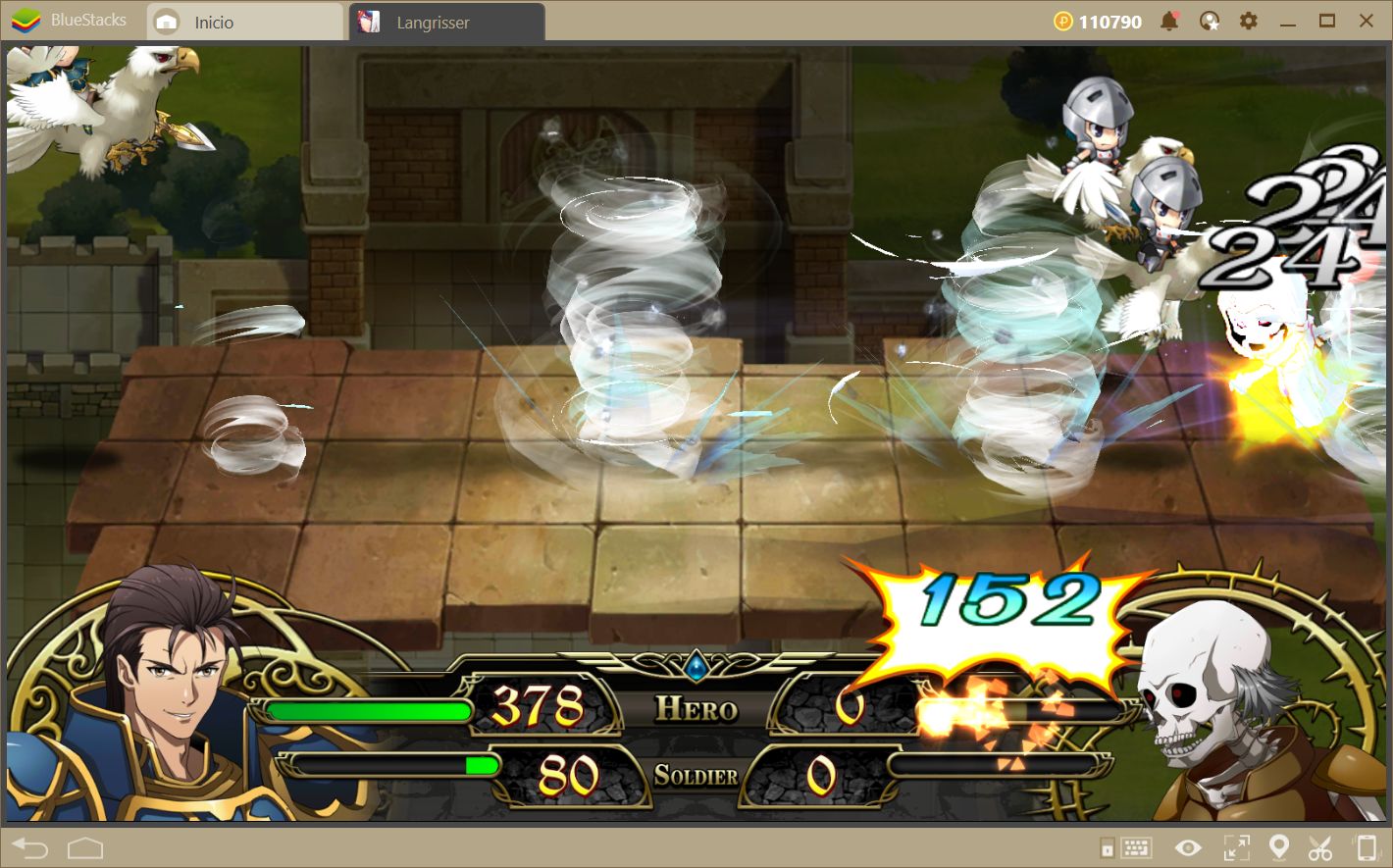
In Langrisser, there are many elements to consider when fighting through the numerous combat scenarios. It’s not enough to deploy your troops and give the attack order; one could easily fall prey to an ambush this way and end up surrounded by the enemy.
To triumph in combat, you will need to understand your enemy, know what he’s capable of, what each of his units can do, their weaknesses, and strengths, and turn them against him to seize the victory. Similarly, it’s also important to learn the properties of the battlefield since your units might receive bonuses or penalties depending on the type of terrain that they fight upon. In the more advanced stages, these are the elements that will mark the difference between life and death in battle.
In this guide, we will talk about the fundamentals of combat in Langrisser. Let’s get started.
Know Your Enemy
As we mentioned several times, it’s important to know what your enemy can do before organizing an appropriate course of action. At its most basic expression, we can safely say that the most important aspects in this area are the unit types, as well as the priority system.
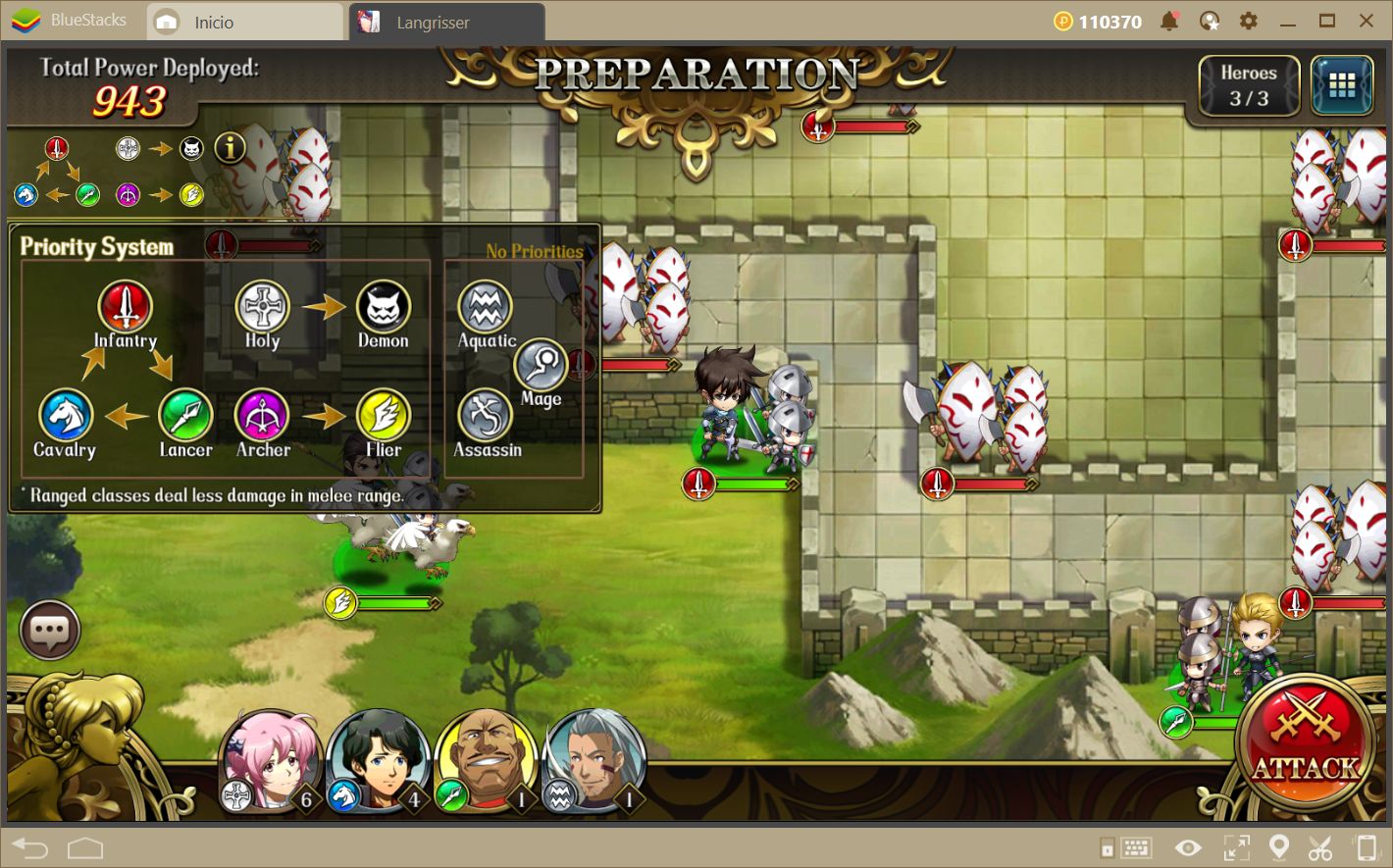
We first spoke about the priority system in our Langrisser review, in which we talked about the different unit categories. Furthermore, on that occasion, we also discussed how these different units measure up against each other, in a system that resembles the timeless rock-paper-scissors game. The three main unit types that make up this system are the infantry, the cavalry, and the lancers, all of which fight amongst themselves in a system of weaknesses and strengths. Afterward, we have the archers and the fliers; the former defeat the latter, but the fliers are very strong and resilient on their own right, which makes it imperative that you exploit their vital weakness to quickly defeat them. Finally, we also have the light, and demon units and, once again, the former have the advantage over the latter.
Apart from the unit types that we just mentioned, there also exist the aquatic, assassin, and mage units, which have no priorities whatsoever but have special properties that help them to stand out among the rest.

In short, the priority system in this game can be summarized in the following manner:
- Infantry is strong against lancers, but weak to cavalry.
- Lancers are strong against cavalry, but weak to infantry.
- Cavalry is strong against infantry, but weak to lancer.
- Fliers are very strong by themselves, but are critically weak to archers.
- Archers are strong against fliers, but weak to direct melee attacks.
- Light is strong against demons.
- Neither aquatic units, assassins, nor mages have any type priorities.
It is crucial that you learn the priority system since it will be essential for your success in the advanced stages of the game. Furthermore, it is also important when positioning your units at the end of each turn; on some occasions, it is necessary to bait the enemy movement by leaving one of your own inside the danger zone. However, if you’re using this strategy, you must try, whenever possible, to avoid leaving a unit with a type disadvantage as bait.
Know the Terrain
Just like there are multiple unit types, there are also many different terrains in the maps of this game. Depending on the type of terrain that your units fight and march on, they will receive different effects. The said effects work in two specific areas: the defense of the units, and their movement capabilities.
Play Langrisser on BlueStacks
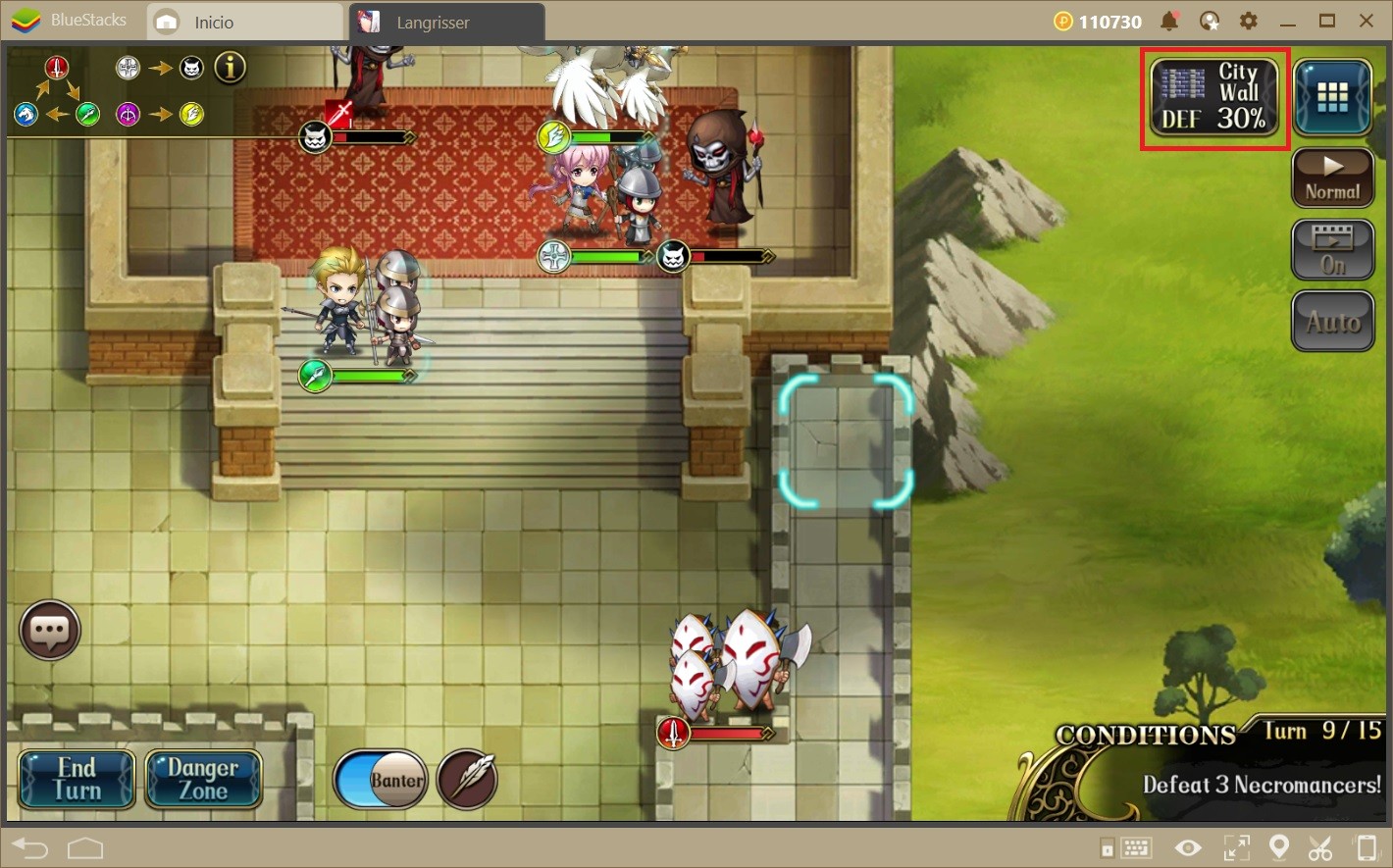
Regarding the former: if a unit launches an attack on another that is standing on a special terrain, the target could receive a bonus to their defense and take less damage as long as they stay on that tile. Similarly, regarding movement, each unit has a mobility value that represents the number of tiles they can move across each turn. However, depending on the unit type, and the type of terrain that he’s trying to cross, his movement could be significantly compromised.
The terrain types in the game and their effects are the following:
- Woods: +20% defense to the units that fight in this terrain. Penalty to the movement of cavalry, and aquatic units.
- Indoors: No restrictions or special effects.
- Mountains: +10% defense to units who fight on these tiles. Movement penalties to aquatic units, cavalry, and infantry.
- Rivers: No defense bonus. Movement penalty to cavalry, and infantry.
- Oceans: No defense bonus. Movement penalty to cavalry, and infantry.
- Walls: No defense bonus. Movement penalty to cavalry, and infantry.
- Tombs: +30% defense to units in these tiles. Movement penalty to all units.
- Desert: No defense bonus. Movement penalties to cavalry, and aquatic units.
- Cargo: +5% defense bonus to the units that fight in these tiles. Movement penalty to cavalry, and aquatic units.
As you can observe, there are some units that offer excellent movement capabilities. Fliers, for example, are not hindered by any type of terrain but receive the defense benefits from fighting in them just the same. Similarly, while aquatic units may have a hard time moving on dry land, they are exemplary swimmers and can move around freely in any body of water, which usually slows down other unit types significantly.
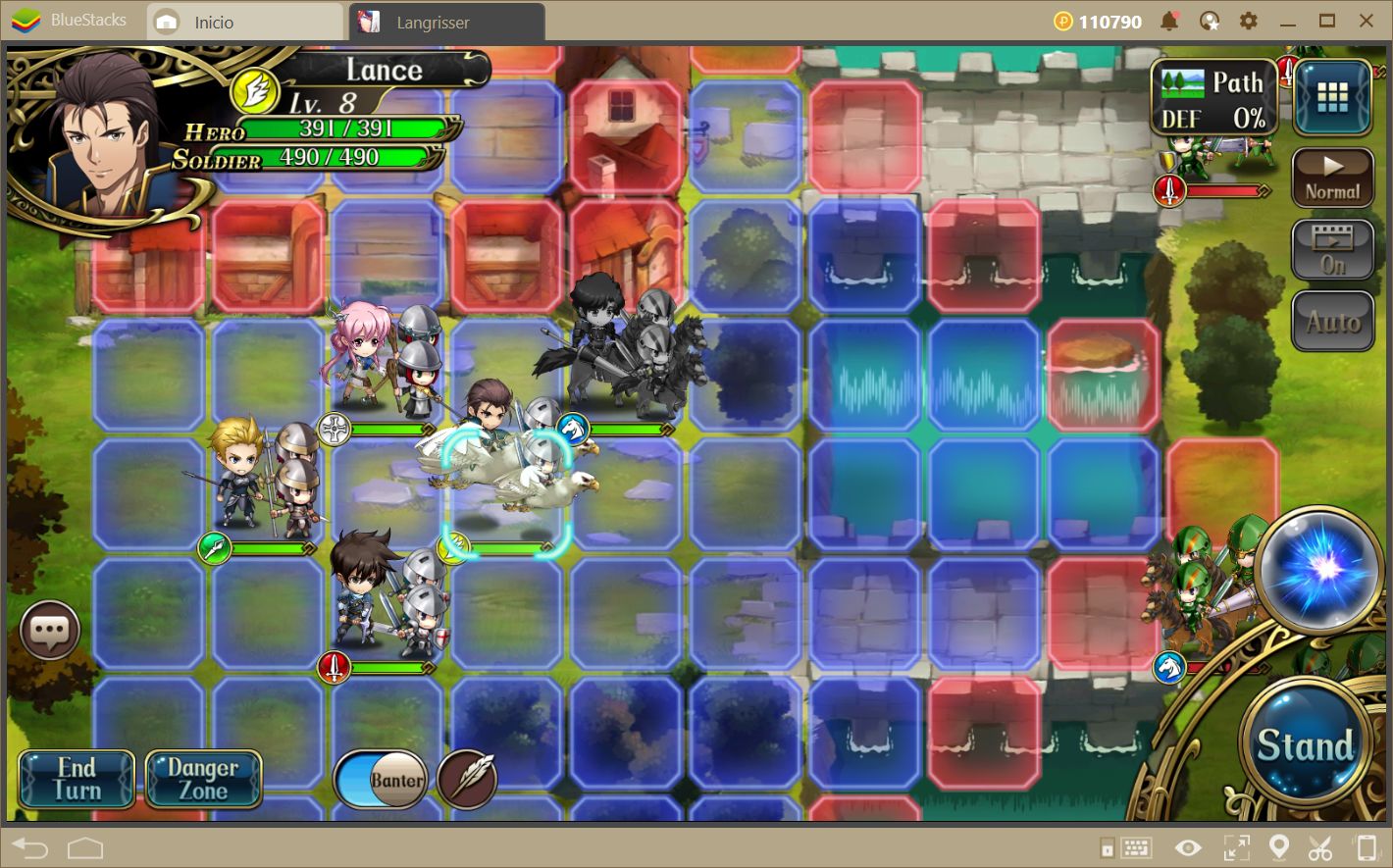
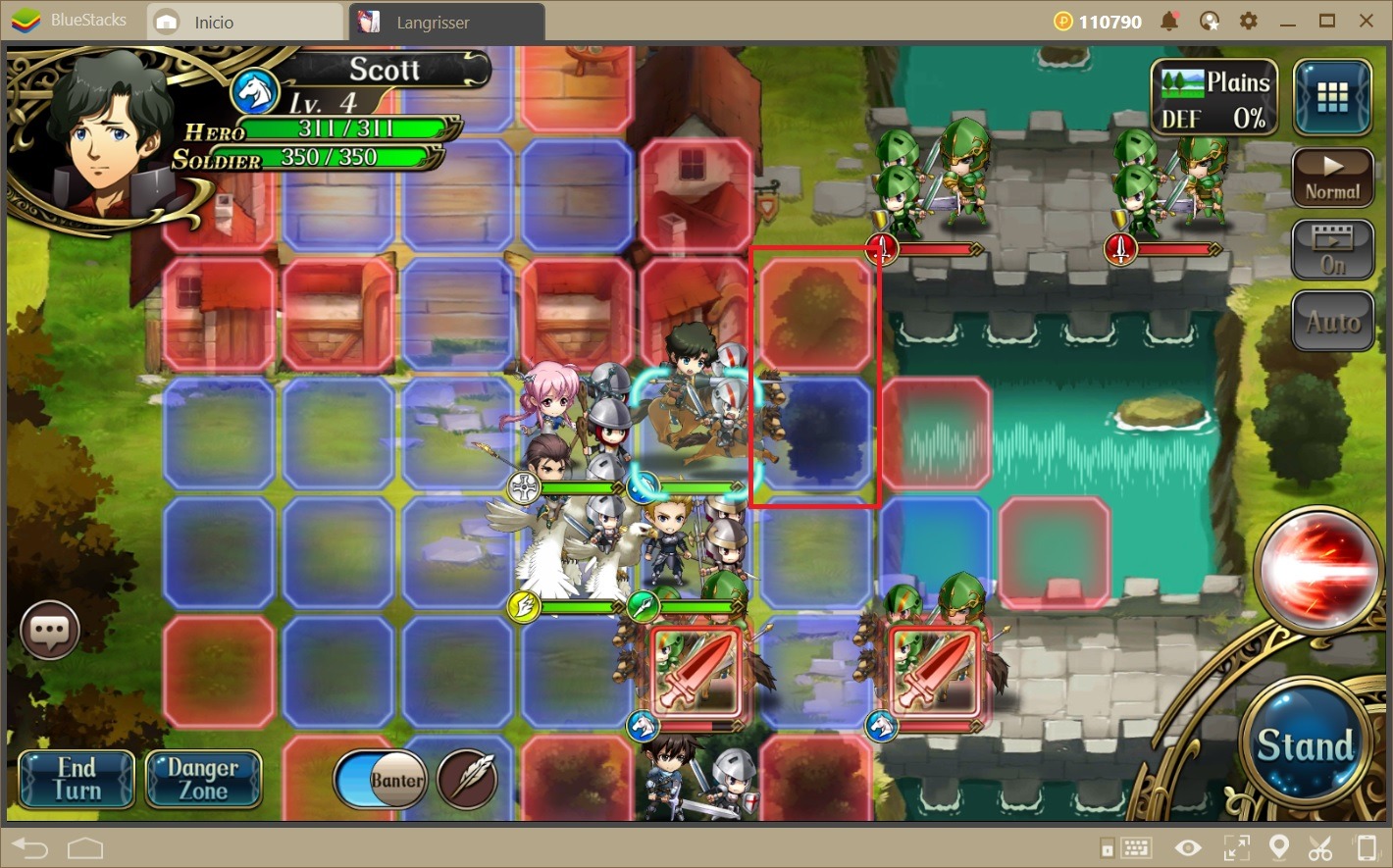
When the time to deploy your squad comes, it’s very important that you first examine the battlefield conditions, and use only the units that will be able to move freely across its different terrains. In most cases, your enemies will always be prepared for the specifics of each battlefield. In this sense, if you wish to remain on the winning side of the battle, we suggest that you do the same, or you will always run the risk of falling prey to ambushes by enemies that can move and position themselves much better than your own squad.
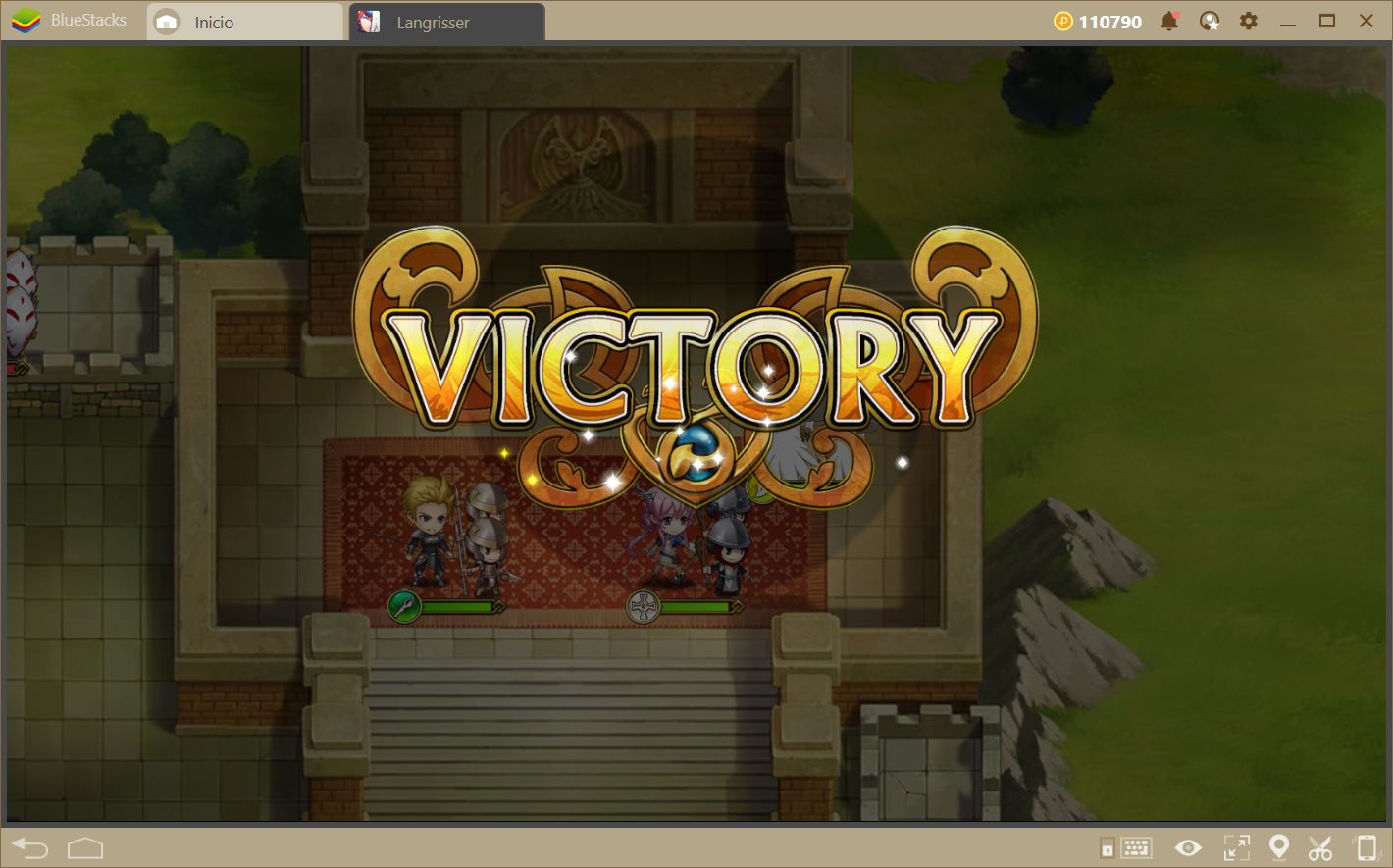
Both the priority and terrain systems make up the combat fundamentals of Langrisser. Regardless of your team composition or strategy on the battlefield, these systems are the universal truths that you must always keep in mind to snatch the victory on every occasion. Nevertheless, if you wish to learn more about this game, we invite you to check out our blog.
Like countless other gamers, if you wish to enjoy this title like any other Strategy Game for PC, with the comfort of keyboard and mouse controls, we suggest that you take a look at our BlueStacks usage guide for Langrisser, to know everything about how to install, setup and start playing Langrisser on PC.
Hope to see you there soon. Do share your thoughts about the game with us in the comments section below.



